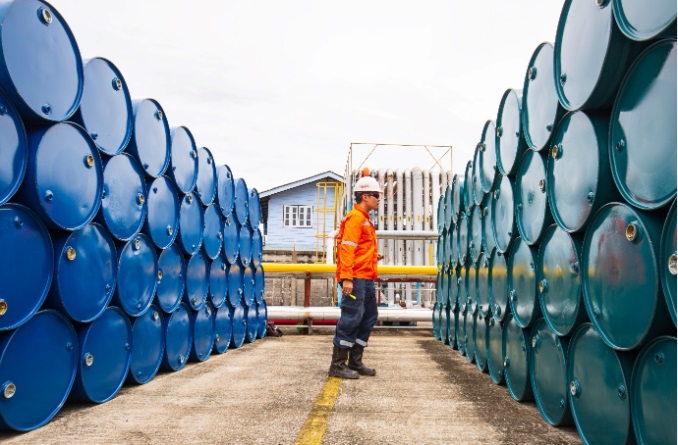Stormwater runoff is a significant contributor to water pollution in our surface water and groundwater3. This runoff travels from its origin, potentially picking up sediments, pollutants, and disease-causing agents and deposits them into nearby bodies of water. While alarming, better management of stormwater runoff can have a significant impact on minimizing pollution. The best plan for preventing stormwater runoff not only reduces pollution; it also helps maintain ecological balance.
What is stormwater runoff? It is the runoff water from rainfall or snowmelt that accumulates debris, chemicals, and pollutants which infiltrate the groundwater, resulting in contamination. These impurities enter the natural water systems, negatively impacting the water quality. If left unchecked, runoff can lead to erosion totaling 35–45 tons of sediment per acre each which ends up in our water sources2, in addition to things like oil and grease residues. This can increase turbidity, which reduces the amount of available sunlight required for the growth of aquatic life4. We can prevent this and keep our water healthy by developing a plan of action for mitigating the opportunities for runoff to occur.
To combat stormwater pollution from construction sites, the EPA requires that all construction sites have a National Pollutant Discharge Elimination System (NPDES) permit for projects disrupting more than an acre of land. The Stormwater Pollution Prevention Plan (SWPPP) is an essential step in obtaining an NPDES permit and must be implemented by the entity with control over the day-to-day operational activities of the construction site. More specifically, the SWPPP identifies methods for mitigating stormwater pollution specifically related to construction sites. The plan is specific to a particular construction location, project, and potential sources of stormwater runoff. These control measures are needed to eliminate pollutants in the discharge.
Successful formation and implementation of an SWPPP includes four essential steps:
- Formation of a pollution prevention team: Identify qualified personnel at the construction site who are willing to assist in the maintenance of the SWPPP and have the authority and ability to identify and communicate necessary corrective actions to improve adherence and performance of the SWPPP.
- Site assessment and planning: Perform an assessment of activities performed onsite, evaluate existing sampling data, and prepare maps.
- Selecting appropriate control measures: Control measures are Best Management Practices (BMPs) used to minimize or reduce contaminants’ release in stormwater. Examples of BMPs include silt fences, erosion control blankets, and picking up trash and debris.
- Inspections, monitoring, and record-keeping: Inspections and monitoring of implemented BMPs are required4 on a routine basis.
From the initiation of a Stormwater Pollution Prevention Plan (SWPPP) to project completion, prevention of pollution to our water sources requires attention to detail, efficient and effective communication, and a dedication to being a proponent for improved water quality. By maintaining up-to-date project information, performing routine inspections, and documenting the scope of work, including details of the equipment and materials used at the site, we can minimize the impact construction sites have on the water sources in surrounding areas. Electronic management of the stormwater permit activities provides a logical and coherent method of communicating your plan to operators. SafetyStratus provides a convenient and practical method of managing your SWPPP through our Permit Authorization, Inspection, and Compliance Calendar modules.
For more details: Click here & Contact SafetyStratus Now
AUTHOR BIO

Satya is the resident Chemical Engineer here at SafetyStratus. She is focused on supporting and improving the Chemical Inventory and related products and services for the SafetyStratus platform. She has recently completed her master’s degree in Chemical Engineering. While relatively new to the business world, she has conducted cutting-edge research, participated in several notable projects, and worked at a refinery, a steel processing plant, and, most notably, for the Center of Atomic Research. She is eager to use her skills and talents to share knowledge with the broader EHS community.
Follow @Satya: Linkedin
References
1.SWPPP Smart, FAQ – SWPPP QSD QSP Stormwater Pollution Prevention
Qualified SWPPP Developer Practitioner Inspector. Retrieved September 30, 2020, from www.swpppsmart.com website: http://www.swpppsmart.com/faq
2.The United States Environmental Protection Agency. (2007). Developing Your Stormwater Pollution Prevention Plan A Guide for Construction Sites Who? Retrieved from https://www3.epa.gov/npdes/pubs/sw_swppp_guide.pdf
3. The United States Environmental Protection Agency. (2009). Developing Your Stormwater Pollution Prevention Plan: A Guide for Industrial Operators. Retrieved from https://www.ohioswa.com/wp-content/uploads/2015/10/industrial_swppp_guide.pdf
4. The United States Environmental Protection Agency. (n.d.). Does Your Construction Site Need a Stormwater Permit? A Construction Site Operator’s Guide to EPA’s Stormwater Permit Program. Retrieved from http://cummingutilities.com/sw_cgp_brochure.pdf



